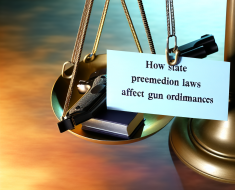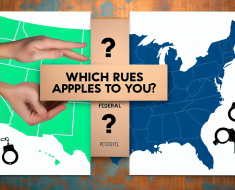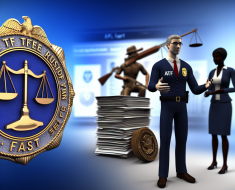Understanding the Legal Process for Gun Seizure and Return

The debate surrounding gun ownership is complex and deeply rooted in legal, social, and political contexts. One critical aspect of this debate is the process through which firearms are seized by law enforcement and the circumstances under which they may be returned to their owners. Understanding this legal process is essential for gun owners, policymakers, and the general public alike.
This article explores the comprehensive legal framework governing gun seizure and return in the United States, highlighting key statutes, procedures, case law, and practical implications. It also provides real-world examples to illustrate how these laws operate in practice.
The Legal Basis for Gun Seizure
Gun seizure refers to the temporary or permanent confiscation of firearms by authorities. This action is typically taken when there is a perceived risk to public safety or violations of gun laws. The legal basis for seizing guns arises from both federal and state laws, as well as court orders.
At the federal level, the Gun Control Act of 1968 (GCA) regulates firearm possession and includes provisions that allow authorities to seize guns from prohibited possessors—such as felons or individuals adjudicated mentally incompetent. However, most gun seizure actions are carried out under state laws, which vary widely.
Key grounds for seizure often include:
- Criminal activity: Firearms used in crimes or possessed by individuals suspected of criminal conduct can be seized as evidence or to prevent further offenses.
- Domestic violence restraining orders: Many states have “red flag” or extreme risk protection order (ERPO) laws allowing temporary gun removal from individuals deemed dangerous to themselves or others.
- Prohibited possession: Individuals convicted of certain crimes, underage persons, or those with mental health adjudications may have their firearms seized.
- Illegal possession: Guns possessed without proper licenses or permits can be confiscated.
For example, California’s Gun Violence Restraining Order law allows family members or law enforcement to petition a court to temporarily remove firearms from someone exhibiting dangerous behavior. In 2020 alone, over 3,000 such orders were issued statewide, demonstrating how seizure mechanisms are employed proactively.
The Process of Gun Seizure: Steps and Procedures
The procedure for seizing a firearm usually follows a structured legal path designed to balance public safety with individual rights. While specifics differ by jurisdiction, common steps include:
- Investigation and Cause Determination: Law enforcement identifies grounds for seizure based on probable cause—such as criminal suspicion or threat assessment.
- Obtaining a Warrant: In most cases, police must obtain a judicial warrant authorizing seizure unless exigent circumstances exist (e.g., immediate danger).
- Execution of Seizure: Officers confiscate the firearm(s) safely while documenting chain of custody and evidence related to the case.
- Notification: The owner is notified about the seizure and given information regarding their rights and potential next steps.
- Court Proceedings: Depending on circumstances, hearings may be held where the owner can contest the seizure or demonstrate eligibility for return.
A notable example is Tennessee’s ERPO process where law enforcement obtains an order after a judge finds sufficient evidence that an individual poses a danger. Once approved, officers seize firearms within hours. The individual then has due process rights including an opportunity for a hearing within 14 days.
The Legal Standards Governing Return of Seized Firearms
The return of seized guns is governed by specific legal standards intended to ensure that firearms do not go back into potentially dangerous hands. The burden often lies with the gun owner to prove eligibility for return based on compliance with laws and absence of disqualifying factors.
- No Pending Charges or Convictions: If firearms were seized due to alleged criminal activity but charges are dropped or resolved favorably for the owner, return may be possible.
- Mental Health Clearances: For seizures related to mental health concerns, proof that restrictions have been lifted may be required before return.
- Lapse of Protective Orders: Guns taken under restraining orders generally must remain seized until those orders expire or are dismissed.
- Compliance With Registration/Permit Requirements: Owners must often demonstrate they meet all state licensing requirements before reclaiming firearms.
The U.S. Supreme Court decision in Bruen v. United States, decided in June 2022, emphasized constitutional protections under the Second Amendment regarding firearm possession. This ruling has influenced how courts assess whether returns should be granted when seizures appear overly broad or unjustified.
Challenges and Controversies Surrounding Gun Seizure Laws
The topic of gun seizure remains contentious with debates focusing on civil liberties versus public safety concerns. Critics argue that some seizure laws infringe on constitutional rights without adequate due process safeguards. Advocates contend that these measures prevent tragedies such as mass shootings and domestic violence fatalities.
- Diverse State Approaches: Some states like Florida have expanded “red flag” laws aggressively following high-profile shootings (e.g., Parkland school shooting), while others resist such measures citing Second Amendment






